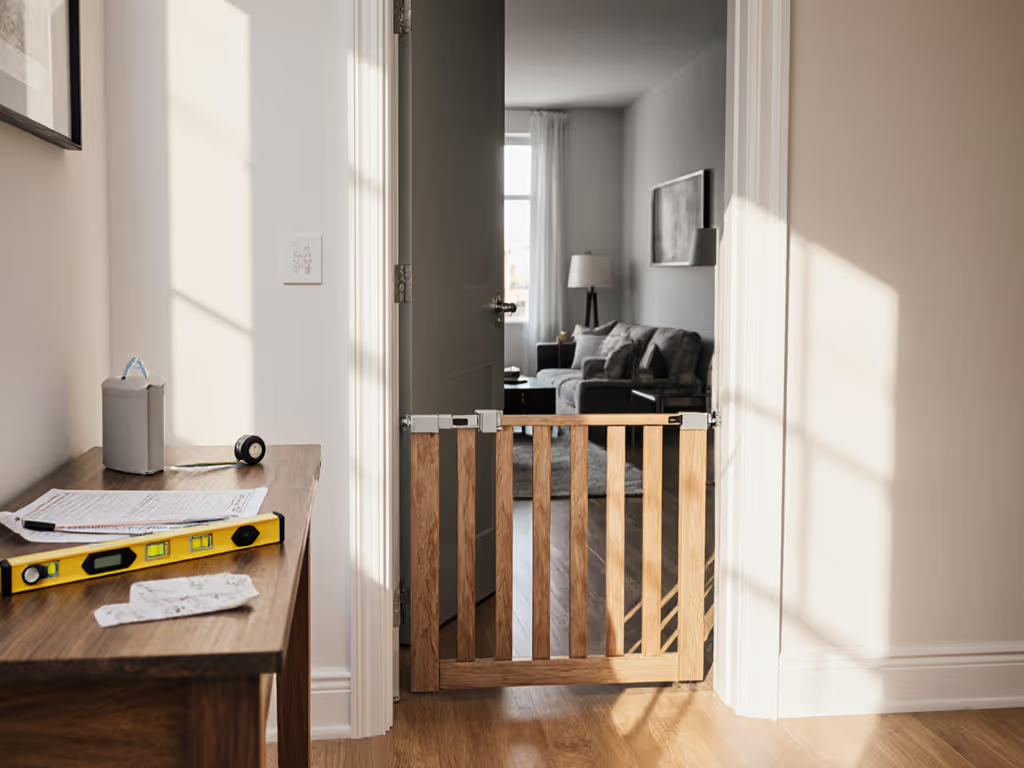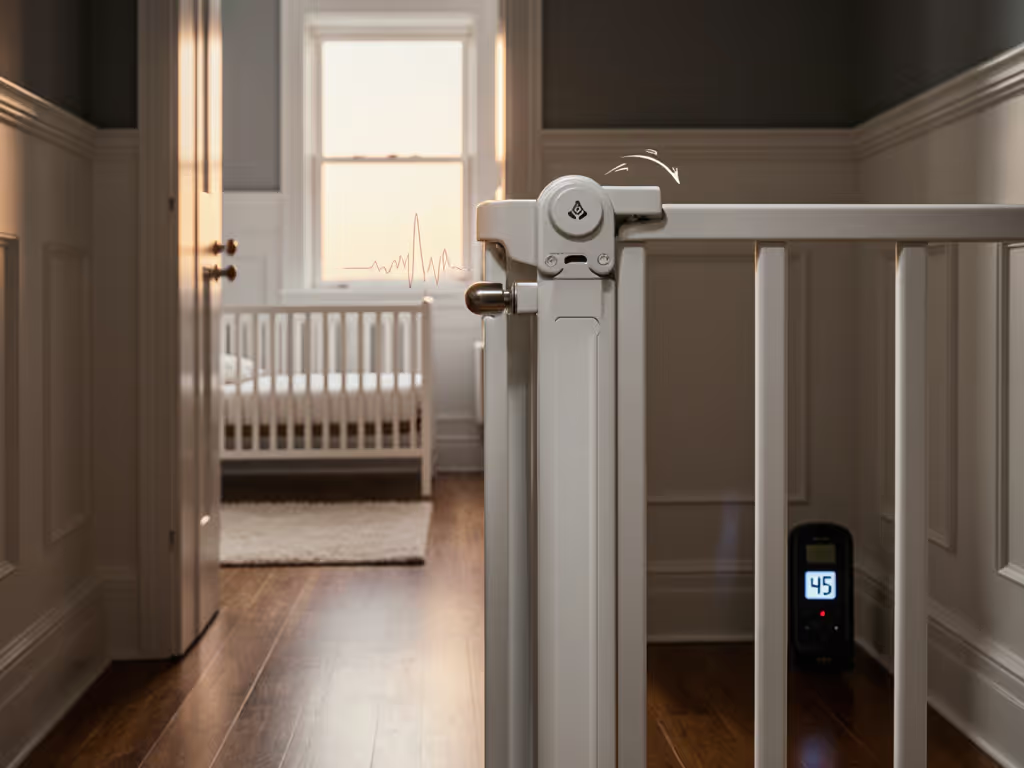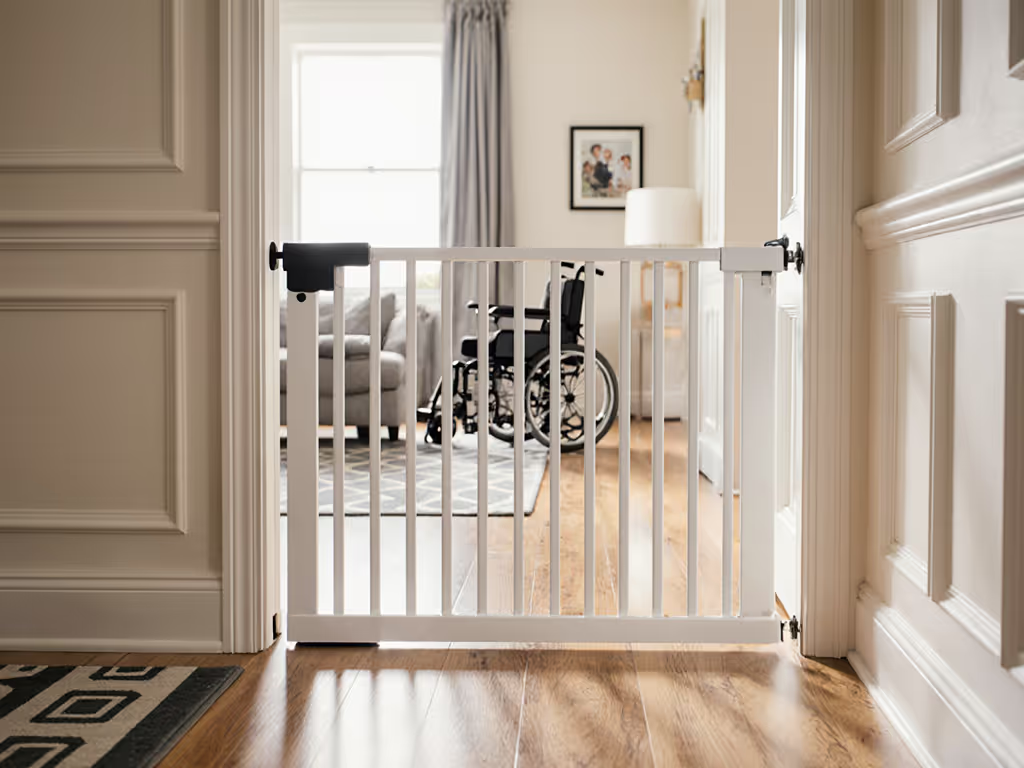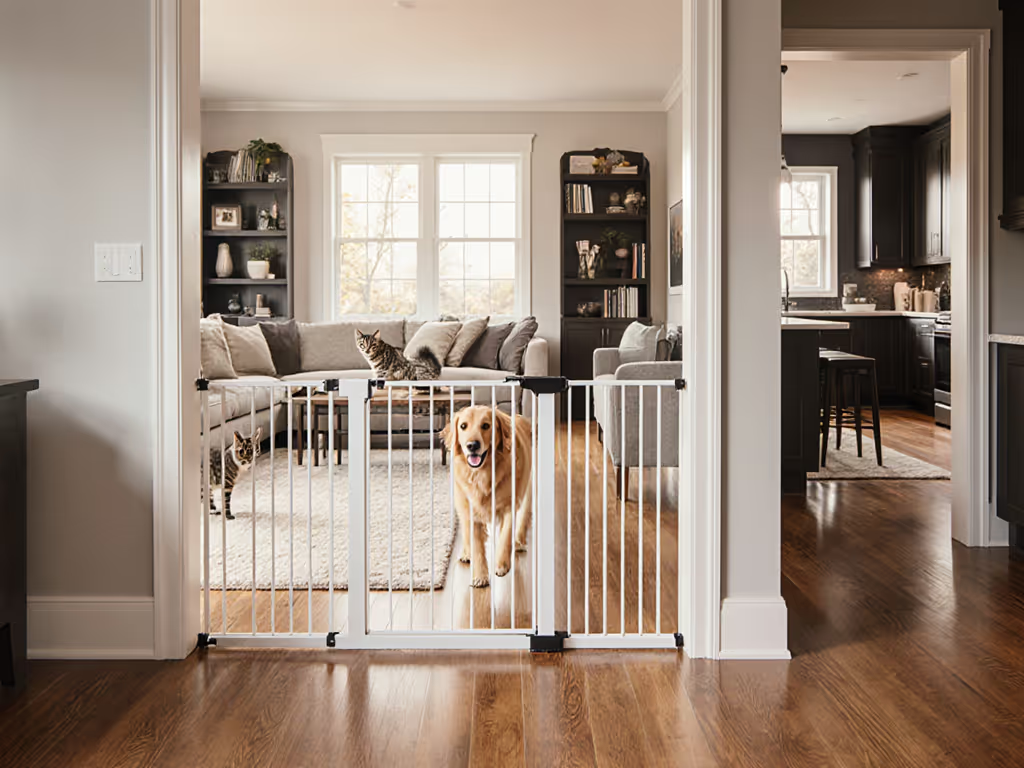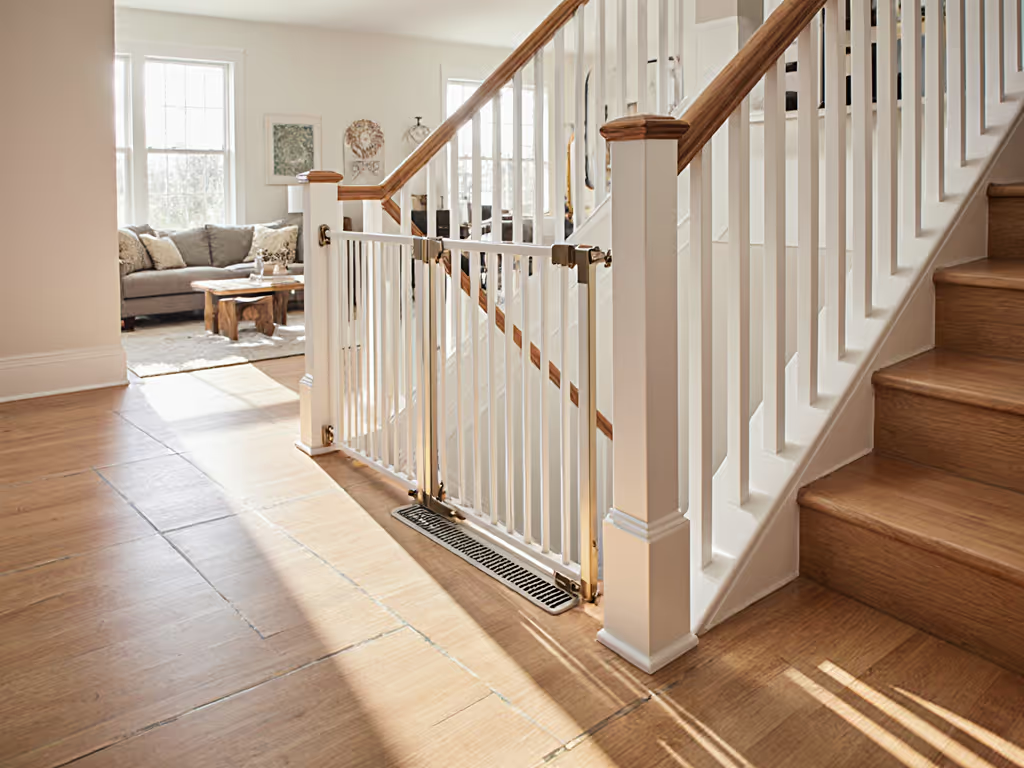
Stairs-Safe Baby Gate Materials: Wood vs Metal vs Plastic
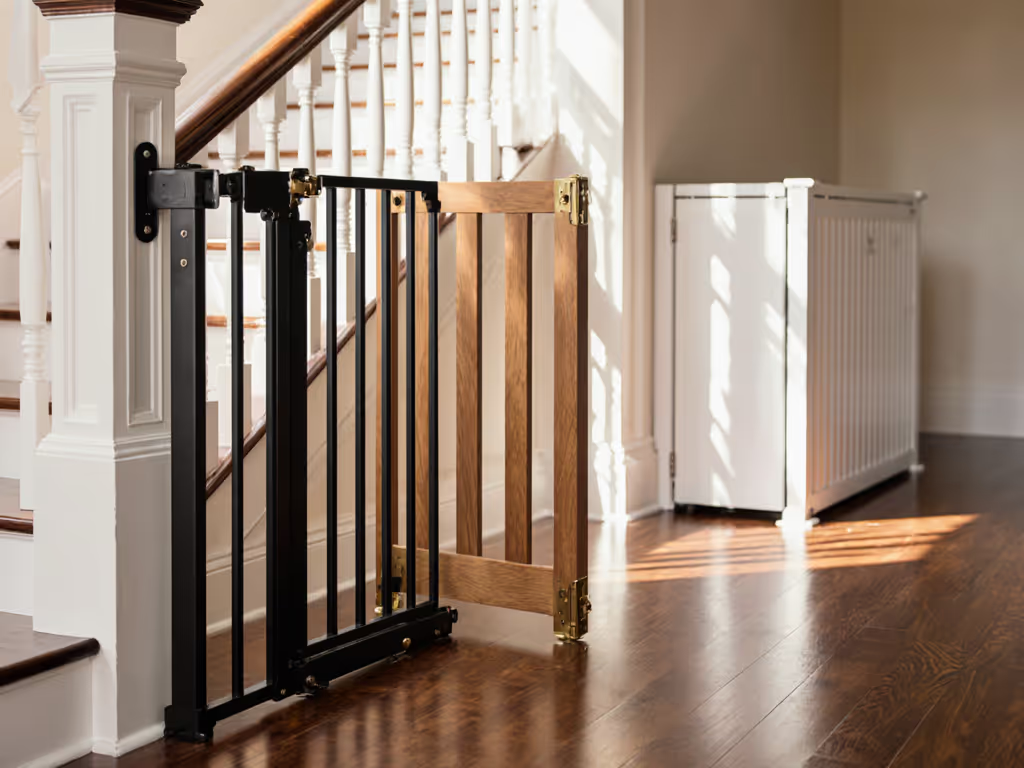
Choosing the right baby gate material isn't just about matching your home's style, it's about building automatic safety habits that protect your child and your peace of mind. When we talk plastic vs metal vs wood gates, the real question is: Which one will your family actually use correctly every single time? As a caregiver ergonomics specialist who's trained grandparents and babysitters for over a decade, I've seen how low-friction habits prevent more mishaps than the most expensive gate. Let's cut through the overwhelm and find your perfect match.
Reset the routine, not the will.
Why Material Matters More Than You Think (Beyond Just "Strong Enough")
Materials aren't just about durability, they shape how easily your whole household maintains safety. A gorgeous wooden gate that sticks on the latch, a flimsy plastic gate that sags near the dog's water bowl, or a metal gate that screeches when opened can all lead to dangerous shortcuts. Your goal? Make safety the default, not the exception, every day.
FAQ 1: "Is Wood Really Safe for Top-of-Stairs? I Love the Look But Hear Mixed Things"
Short answer: Only if hardware-mounted with professional-grade brackets.
Wood gates (like the Summer Infant Anywhere Decorative gate) shine in pressure-mounted room dividers where falls aren't a risk. They blend beautifully with farmhouse or traditional decor and resist pet scratches. But for top-of-stairs? Critical note: Wood requires perfect screw placement into wall studs (not drywall) to handle a child's full weight. Even then, wood can warp over time in humid climates, loosening tension.
My coaching tip: If you're renting or can't drill, skip wood for stairs entirely. For hallway/room use, choose wood with metal reinforcement (like charcoal accents) to prevent bending. Measure twice for baseboard clearance (wood frames often need spacers to avoid pressure points).
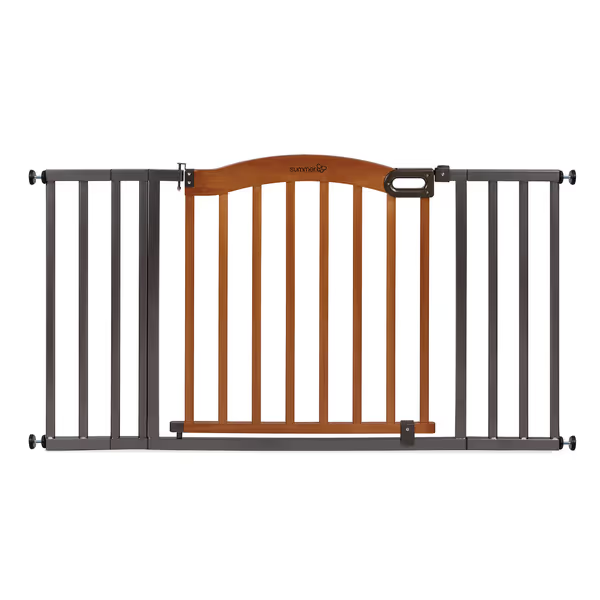
Summer Infant Anywhere Decorative Walk-Thru Gate
FAQ 2: "Metal Gates Feel Industrial - Can They Fit My Modern Home AND Stop My 22lb Toddler?"
Short answer: Yes, and they're often the safest choice for high-risk zones when chosen wisely.
Metal gates (typically steel or aluminum) dominate hospital and daycare settings for good reason: they withstand constant pushing, climbing, and pet collisions. Look for:
- Powder-coated finishes (black, matte white, or bronze) that mute the "industrial" look
- Tension indicators (like Regalo's rubberized knobs) showing when pressure is optimal
- No horizontal bars below 18" (toddlers use these as footholds)
Critical for stairs: Hardware-mounted metal gates (screwed into studs) are non-negotiable for top-of-stairs. For a deeper breakdown of when to choose pressure-mounted vs hardware-mounted on stairs, see our pressure vs hardware stair guide. Pressure-mounted metal? Only for bottoms of stairs or room dividers (never where falls could happen). Pro tip: Test "one-handed" operation before buying. If you can't open it holding a laundry basket, caregivers will prop it open.
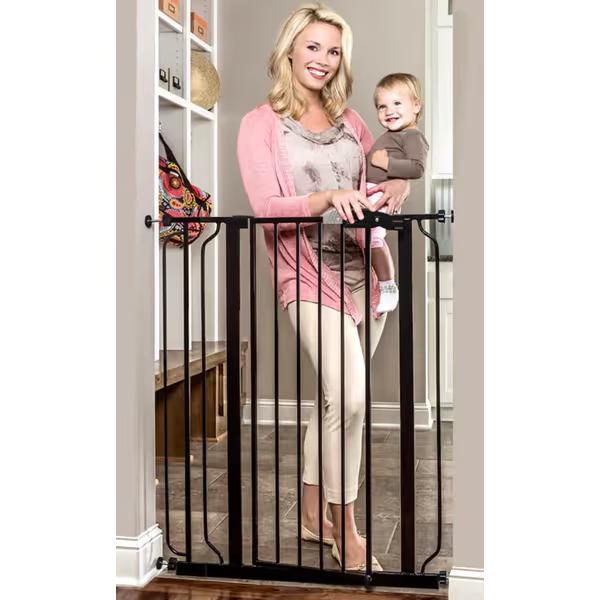
Regalo Easy Step Extra Tall Walk Thru Baby Gate
FAQ 3: "Aren't Plastic Gates Flimsy? My Aunt's Broke When My Cousin Leaned On It"
Short answer: Not all plastic, and the right plastic gate solves unique problems.
Most plastic gates (like BabyDan Guard Me) use flexible, impact-resistant polymers (not cheap, brittle materials). Their genius lies in problem-solving:
- Auto-retracting designs eliminate tripping hazards (no floor bars!)
- Near-invisible when retracted (ideal for open-plan homes)
- 100% PVC-free options resist pet chewing and wipe clean
Where they shine: Tight spaces (narrow hallways, curved stairs), pet zones (cats slip through mesh!), and rental homes. Big limitation: Can't handle heavy pressure (e.g., large dogs leaning). Never use pressure-mounted plastic at top-of-stairs, only hardware-mounted models like BabyDan.
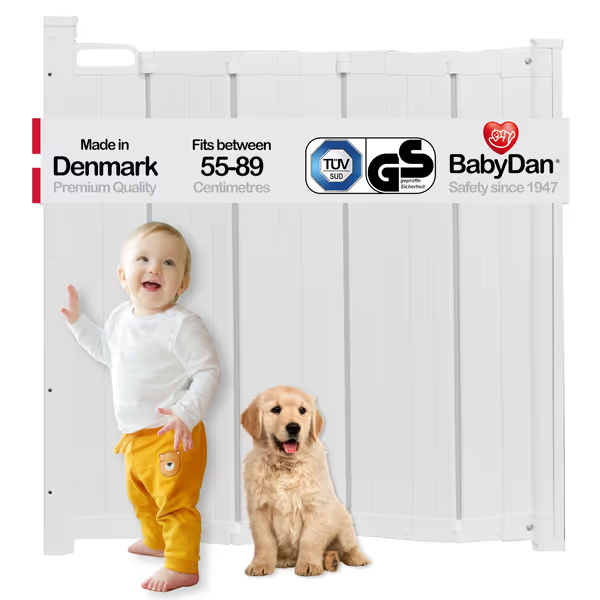
BabyDan Guard Me Auto Retract Gate
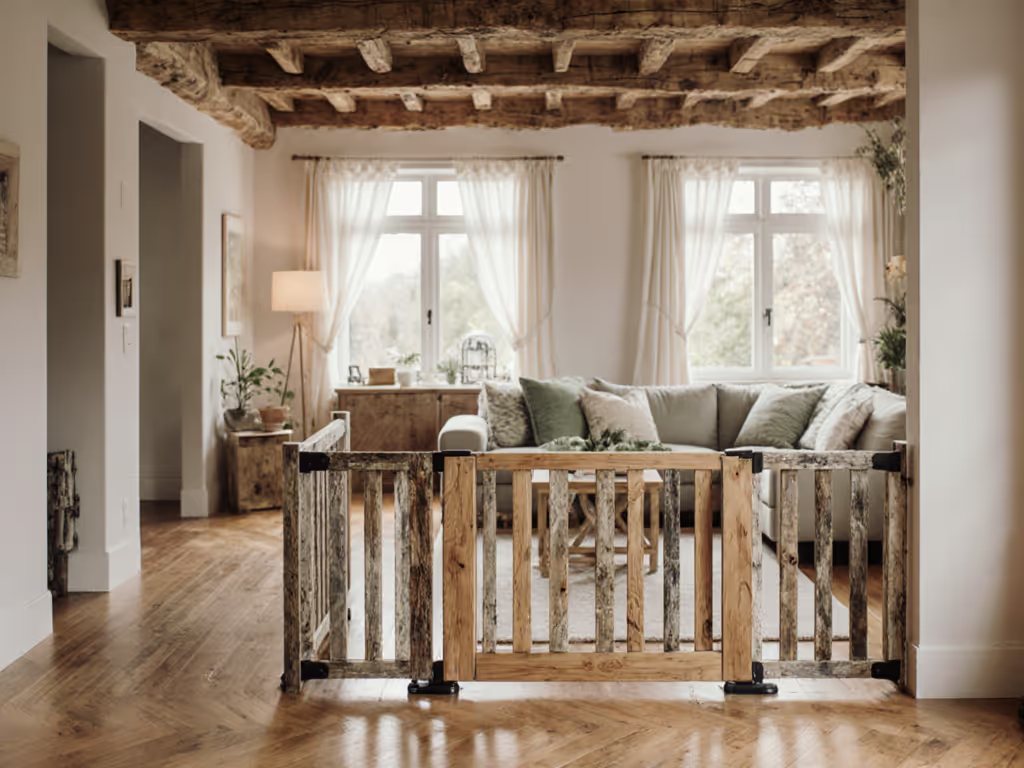
FAQ 4: "How Do I Avoid Tripping Hazards AND Keep It Quiet for Night Feeds?"
This is where habits beat hardware. No material prevents trips if the gate swings wrong or has a threshold bar. Prioritize:
- Swing direction: Must open toward you on stairs (so gravity pulls it closed)
- Threshold-free designs: Retractable or mesh gates (no step-over bars)
- Silent latches: Magnetic or push-button releases (not squeaky levers)
My go-to fix: Practice closing the gate one-handed during snack time (like I did with Grandma in my anecdote). Add a visual cue sticker at eye level. Within days, it becomes automatic, and you'll stop second-guessing if it's latched while rocking a fussy baby at 2 a.m.
FAQ 5: "Will This Still Work When Grandma Visits? She Can't Grip Stiff Handles"
Material impact: Metal gates often have the smoothest one-handed operation (Regalo's latch requires 30% less grip strength than wood). But here's the habit hack: Position matters more than the gate.
- Move latches to dominant-hand side (even if it means re-installing)
- Add textured grip tape to smooth handles
- Choose gates that auto-close (no manual swing needed)
Remember: If a caregiver has to contort to latch it, they won't. Test with grandparents before final installation.
FAQ 6: "Which Lasts Longest With a 60lb Dog and a Climbing Toddler?"
Durability breakdown:
- Metal: Wins for pure strength (tested to 200+ lbs). Steel > aluminum for chew resistance.
- Wood: Great for decor but vulnerable to pet scratches/warping. Needs refinishing.
- Plastic: Holds up to toddlers but large dogs can pop retractable mechanisms.
Pro tip: Add "pet barriers" behind gates (e.g., place the dog bed 2ft away) so pressure isn't constant. No gate survives 24/7 dog leaning, this is about smart zone management.
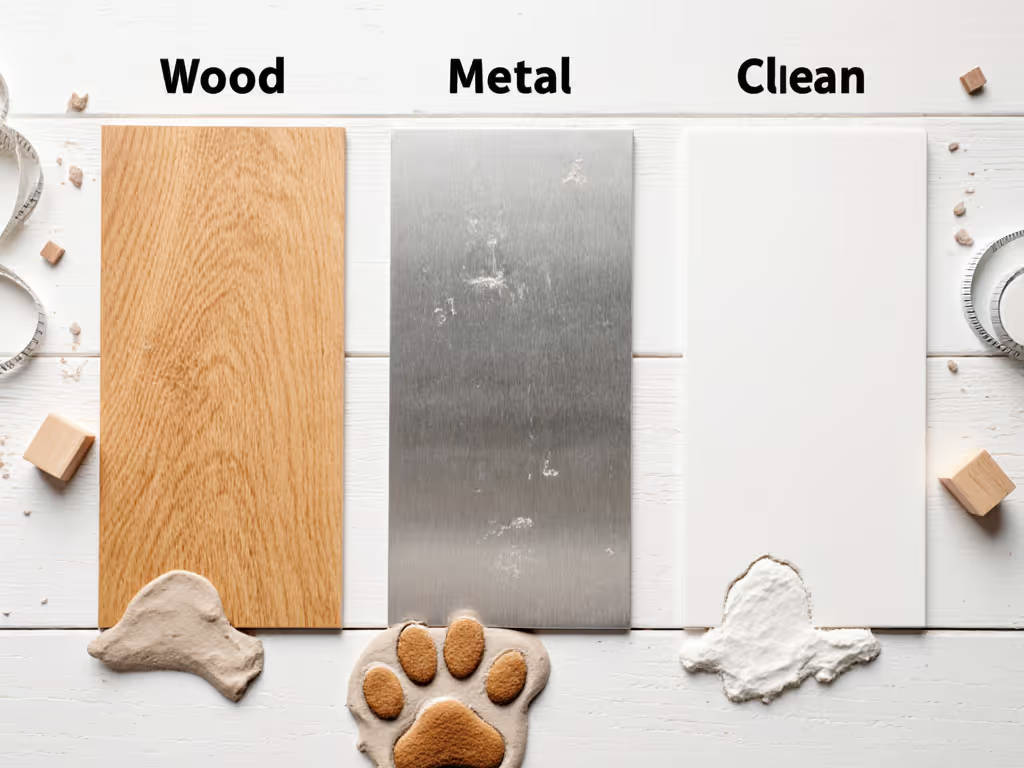
The Real Takeaway: Match Material to Your Daily Friction
Forget "best overall." Your perfect gate depends on where it lives in your routine:
| Scenario | Top Choice | Why |
|---|---|---|
| Top of stairs (rental) | Hardware-mounted metal | No drywall damage with banister clamps; swing direction prevents falls |
| Hallway pet divider | Retractable plastic | Auto-closes, no tripping, cats slip through gaps |
| Grandparents' home | Wood/metal hybrid | Familiar look, smooth latch for arthritic hands |
Your Action Plan: 3 Steps to Gate Confidence
- Measure your friction points: Stand where you'll carry groceries/babies. Is the latch reachable? Does the swing block traffic?
- Test latches before buying: If shopping online, watch videos of one-handed operation.
- Practice with all caregivers: Spend 5 minutes during snack time making latching automatic. Add a visual sticker if needed.
When safety becomes effortless, it becomes permanent. I've watched families transform anxious hovering into calm confidence, simply by choosing a gate that fits their real life, not a generic checklist. Your next step: Grab a notepad and measure one tricky doorway right now. Note where your hand naturally reaches when carrying a load. That's where your gate belongs, not where the manual says it should.
Make safety the default, not the exception, every day.

